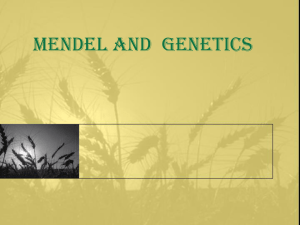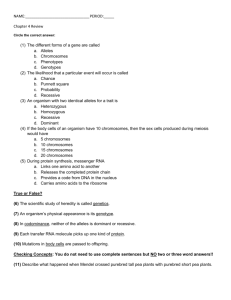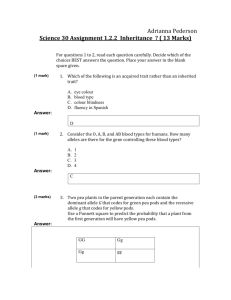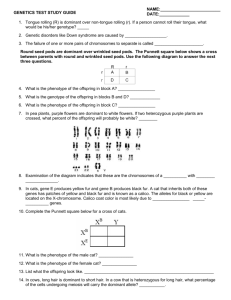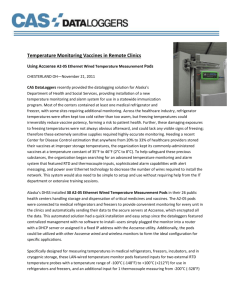Key
advertisement
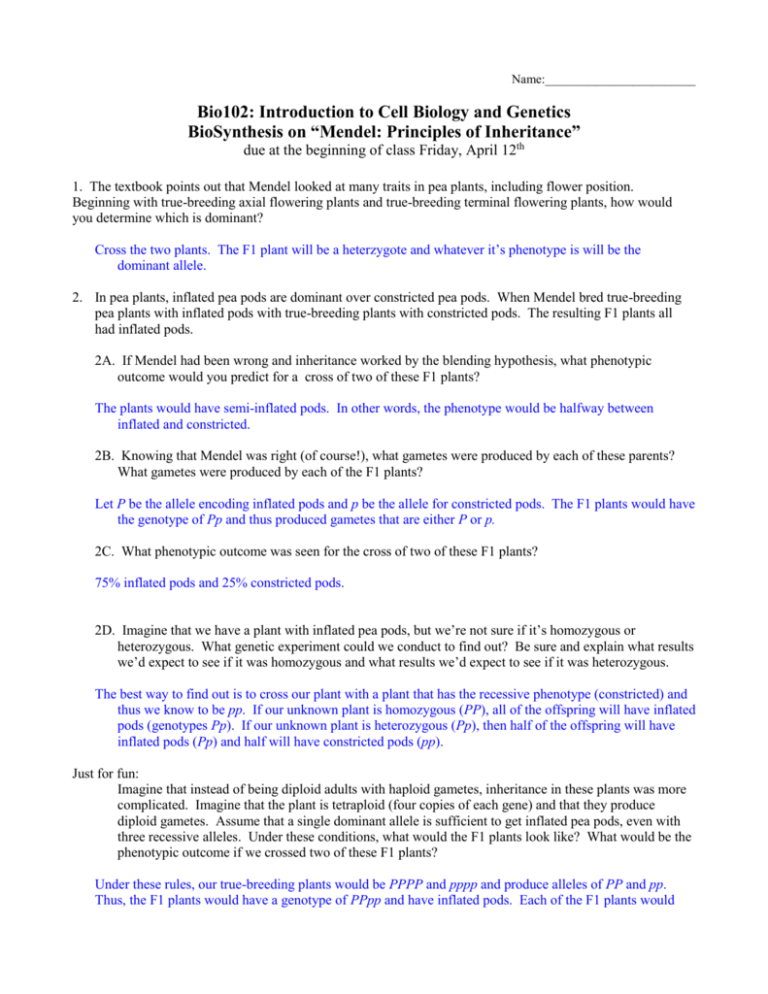
Name:________________________ Bio102: Introduction to Cell Biology and Genetics BioSynthesis on “Mendel: Principles of Inheritance” due at the beginning of class Friday, April 12th 1. The textbook points out that Mendel looked at many traits in pea plants, including flower position. Beginning with true-breeding axial flowering plants and true-breeding terminal flowering plants, how would you determine which is dominant? Cross the two plants. The F1 plant will be a heterzygote and whatever it’s phenotype is will be the dominant allele. 2. In pea plants, inflated pea pods are dominant over constricted pea pods. When Mendel bred true-breeding pea plants with inflated pods with true-breeding plants with constricted pods. The resulting F1 plants all had inflated pods. 2A. If Mendel had been wrong and inheritance worked by the blending hypothesis, what phenotypic outcome would you predict for a cross of two of these F1 plants? The plants would have semi-inflated pods. In other words, the phenotype would be halfway between inflated and constricted. 2B. Knowing that Mendel was right (of course!), what gametes were produced by each of these parents? What gametes were produced by each of the F1 plants? Let P be the allele encoding inflated pods and p be the allele for constricted pods. The F1 plants would have the genotype of Pp and thus produced gametes that are either P or p. 2C. What phenotypic outcome was seen for the cross of two of these F1 plants? 75% inflated pods and 25% constricted pods. 2D. Imagine that we have a plant with inflated pea pods, but we’re not sure if it’s homozygous or heterozygous. What genetic experiment could we conduct to find out? Be sure and explain what results we’d expect to see if it was homozygous and what results we’d expect to see if it was heterozygous. The best way to find out is to cross our plant with a plant that has the recessive phenotype (constricted) and thus we know to be pp. If our unknown plant is homozygous (PP), all of the offspring will have inflated pods (genotypes Pp). If our unknown plant is heterozygous (Pp), then half of the offspring will have inflated pods (Pp) and half will have constricted pods (pp). Just for fun: Imagine that instead of being diploid adults with haploid gametes, inheritance in these plants was more complicated. Imagine that the plant is tetraploid (four copies of each gene) and that they produce diploid gametes. Assume that a single dominant allele is sufficient to get inflated pea pods, even with three recessive alleles. Under these conditions, what would the F1 plants look like? What would be the phenotypic outcome if we crossed two of these F1 plants? Under these rules, our true-breeding plants would be PPPP and pppp and produce alleles of PP and pp. Thus, the F1 plants would have a genotype of PPpp and have inflated pods. Each of the F1 plants would produce three different types of gametes: PP, Pp, pp. By randoming choosing two alleles, we’d get 25% of the gametes to have a PP genotype, 25% would be pp and 50% would be Pp. If we mix these two groups of gametes together, we’ll only get constricted pods if we get a pp gamete from each parent. The odds of that are 25% for the male parent times 25% for the female parent, which equals 6.25% (or 1 in 16).
